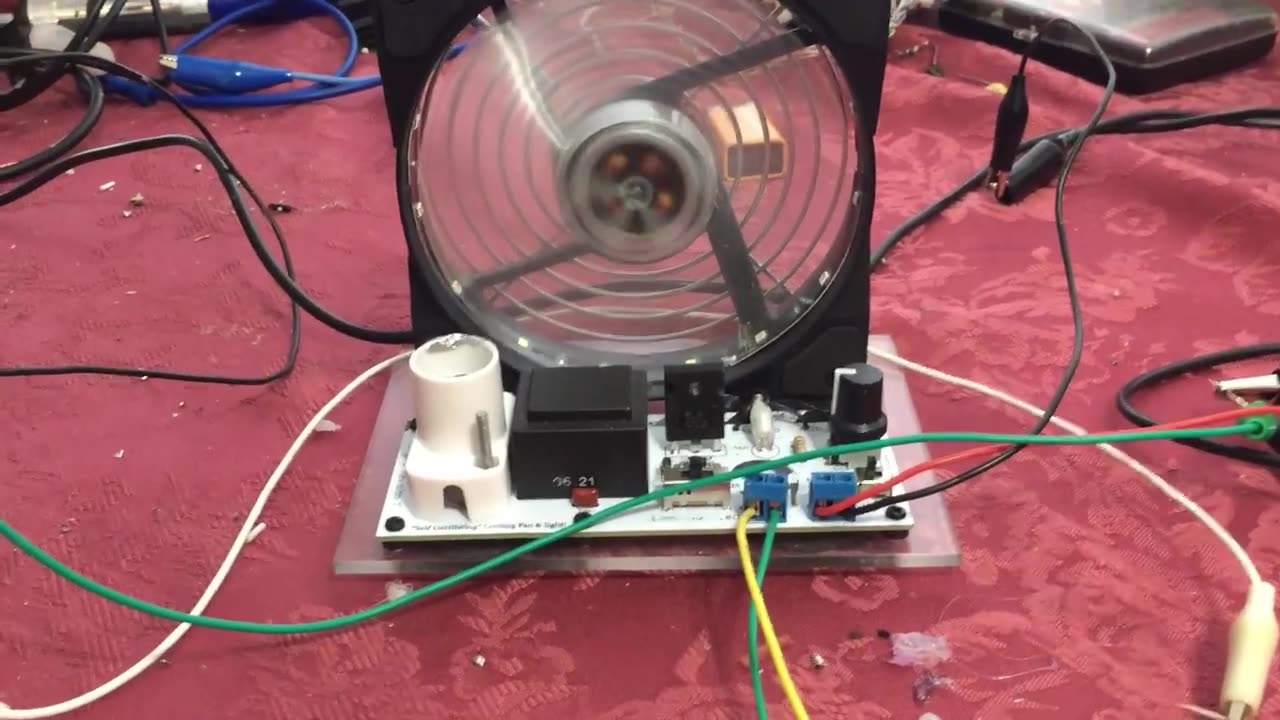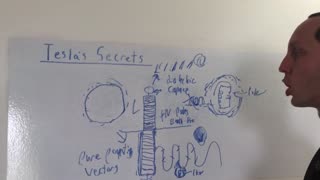Premium Only Content

One Wire Bedini
Hello, everyone! Today, I have something intriguing to share about the Bedini motor, a device well-regarded in the community for its unique way of harnessing energy. As many of you know, the Bedini motor partially relies on G-force as a trigger mechanism. It's a brilliant concept but let's remember—it's not magic. We still need to give it a little kick to get it started. Once spinning, the G-force helps us recycle energy, allowing for the continuous triggering of the motor's coil through polarity flip, leading to a small yet impactful pulse that keeps the system alive.
Many enthusiasts have observed that capturing the motor's inductive kickback—particularly with a flyback diode—enables charging of multiple batteries, but this isn't a case of 'something for nothing'. The energy must originate from somewhere. Here, John Bedini's concept of 'energy from the vacuum' could play a subtle yet pivotal role, possibly tapping into the fabric of the vacuum itself due to the interaction with the G-force.
But when it comes to charging batteries, there's no escaping the small current it takes to energize the coil. There's no such thing as a free lunch, after all. Larger Bedini motors can draw around 1.5 amps with each pulse due to this constant magnetic 'recharging'—it's akin to topping up a magnetic battery.
Now, let's consider leaving this pulse untouched, avoiding direct coupling. Looping the system as-is creates a short-circuit scenario that won't work. Yet, when we short the kickback side, the system seems to perform better, with increased speed and torque while using less energy. It's tempting to label this as over-unity, but what we're seeing is actually a state of hysteresis—this isn't 'real' power.
Nevertheless, Bedini cleverly utilized this state. By using batteries as a 'near dead short', the system operates more efficiently and can charge multiple batteries—though it still nibbles away at our input pulse.
Now, instead of closing the loop—which would negate our gains—let's follow Tom Bearden's advice and keep that loop open. By shorting the Bedini's kickback into a low impedance primary of a high voltage transformer, we're utilizing that state of hysteresis. This behaves similarly to reactive power: it triggers on the primary and enlivens our secondary.
By adopting a one-wire approach, with diodes and separate earth grounds for high voltage outputs, we can harness the pure potential differences between those grounds. This setup yields a surprising increase in voltage, all without a direct electron path from input to output.
Even under the load of charging batteries, we see significant peaks in voltage. This process is scalable, and while it could potentially self-loop, why aim for that when we can achieve much more? By not insisting on self-looping just for the sake of it, we can focus on efficiency—this modification alone can boost a Bedini motor's efficiency to about 75%.
So why not upgrade our Bedini motors this way? It's not just smart—it's revolutionary. Thank you for watching, and let's keep pushing the boundaries of what's possible.
Forum http://typeright.social/forum
Please Help Support My Research: https://youtu.be/pYXETBB40j0
-
 20:48
20:48
Joel Lagace
6 months ago $0.07 earnedTesla's Secret
167 -
 LIVE
LIVE
WeAreChange
1 hour agoAliens?! Pentagon Shoots Down Iranian Mothership Drone Narrative
738 watching -
 LIVE
LIVE
Dr. Drew
6 hours agoRoger Ver, Jan 6ers, Ross Ulbricht: Who Should Trump Pardon First? w/ Robert Barnes & Aaron Day – Ask Dr. Drew
902 watching -
 1:28:46
1:28:46
Redacted News
3 hours agoBREAKING! CIA DEEP STATE PLAN TO STOP TRUMP ACCELERATES WITH FALSE FLAGS TIED TO IRAN | REDACTED
88.3K130 -
 5:38:59
5:38:59
Dr Disrespect
6 hours ago🔴LIVE - DR DISRESPECT - FORTNITE - FIRST PERSON MODE
175K58 -
 UPCOMING
UPCOMING
Melonie Mac
2 hours agoThe Game Awards Live Reaction! Go Boom Live Ep 31!
5291 -
 LIVE
LIVE
Exploring With Nug
7 hours agoMissing Person Found After 25 Years With A Dark Past! What Did He Do?
195 watching -
 1:02:09
1:02:09
In The Litter Box w/ Jewels & Catturd
22 hours agoFANI IN DEFAULT | In the Litter Box w/ Jewels & Catturd – Ep. 703 – 12/11/2024
49.9K17 -
 3:21:08
3:21:08
Viss
6 hours ago🔴LIVE - Dominating The Delta Force Arena! - Delta Force Extractions
23.5K5 -
 17:41
17:41
SLS - Street League Skateboarding
6 hours agoSuper Crown Finalist: Chloe Covell | Best of the 2024 SLS Championship Tour, so far…
15.7K1